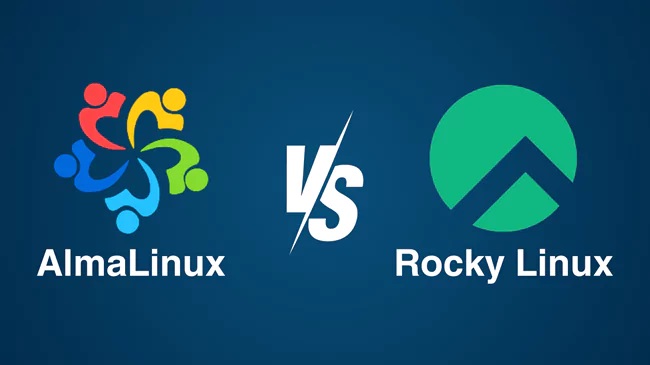Introduction
As CentOS shifts to CentOS Stream, many users are searching for stable, reliable alternatives. AlmaLinux and Rocky Linux have emerged as leading contenders, but which one is right for your needs? Let’s dive into the key differences to help you decide between Rocky Linux vs AlmaLinux.
Rocky Linux vs AlmaLinux: An Introduction
Both AlmaLinux or Rocky Linux were born out of the need for a solid replacement after CentOS’s move to a rolling-release model. These two distributions aim to offer a free, enterprise-grade operating system fully compatible with Red Hat Enterprise Linux (RHEL). However, some crucial differences might influence your choice.
Development and Support
Rocky Linux was founded by Gregory Kurtzer, the original creator of CentOS, with the vision of maintaining a community-driven project that continues the legacy of CentOS. AlmaLinux, on the other hand, is backed by CloudLinux, a company with deep roots in the enterprise Linux ecosystem, providing it with robust financial and technical support.
When considering AlmaLinux vs Rocky Linux, this difference in backing could be significant. Rocky Linux is deeply rooted in community involvement, while AlmaLinux benefits from the stability and resources of a well-established commercial entity.
Community and Ecosystem
The community surrounding each distribution is crucial to its development and sustainability. Rocky Linux has quickly built a passionate community, fueled by the same spirit that drove CentOS. AlmaLinux has also developed a strong community, supported by the extensive user base of CloudLinux.
When weighing AlmaLinux vs Rocky Linux, your decision might hinge on whether you prefer the grassroots, community-driven approach of Rocky Linux or the security that comes with AlmaLinux’s professional backing.
Release Cycles and Compatibility
Both Rocky Linux and AlmaLinux are designed to be fully compatible with RHEL, ensuring the same functionality and performance. They both follow predictable release cycles, which is essential for enterprise environments. However, slight differences in their development processes may lead to varying release schedules.
As you choose between AlmaLinux or Rocky Linux, consider how their release cycles align with your operational needs and whether one’s timing works better for your setup.
Migration and Long-Term Viability
Migrating to either AlmaLinux or Rocky Linux is a smooth process, with tools available to transition from CentOS or other RHEL-based systems. Both distributions are committed to long-term support, ensuring they remain reliable options for years to come.
If you’re comparing Rocky Linux vs AlmaLinux for long-term deployment, both are strong contenders. The final decision might come down to which project’s roadmap and philosophy resonate more with your organization’s values.
Conclusion: AlmaLinux or Rocky Linux – Which Should You Choose?
The choice between AlmaLinux and Rocky Linux ultimately comes down to your specific needs and preferences. Both offer robust, enterprise-grade Linux experiences, but they differ in their approach and support structure.



